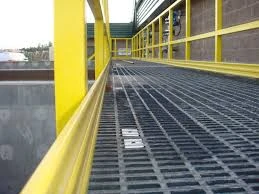
-
 Afrikaans
Afrikaans -
 Albanian
Albanian -
 Amharic
Amharic -
 Arabic
Arabic -
 Armenian
Armenian -
 Azerbaijani
Azerbaijani -
 Basque
Basque -
 Belarusian
Belarusian -
 Bengali
Bengali -
 Bosnian
Bosnian -
 Bulgarian
Bulgarian -
 Catalan
Catalan -
 Cebuano
Cebuano -
 China
China -
 China (Taiwan)
China (Taiwan) -
 Corsican
Corsican -
 Croatian
Croatian -
 Czech
Czech -
 Danish
Danish -
 Dutch
Dutch -
 English
English -
 Esperanto
Esperanto -
 Estonian
Estonian -
 Finnish
Finnish -
 French
French -
 Frisian
Frisian -
 Galician
Galician -
 Georgian
Georgian -
 German
German -
 Greek
Greek -
 Gujarati
Gujarati -
 Haitian Creole
Haitian Creole -
 hausa
hausa -
 hawaiian
hawaiian -
 Hebrew
Hebrew -
 Hindi
Hindi -
 Miao
Miao -
 Hungarian
Hungarian -
 Icelandic
Icelandic -
 igbo
igbo -
 Indonesian
Indonesian -
 irish
irish -
 Italian
Italian -
 Japanese
Japanese -
 Javanese
Javanese -
 Kannada
Kannada -
 kazakh
kazakh -
 Khmer
Khmer -
 Rwandese
Rwandese -
 Korean
Korean -
 Kurdish
Kurdish -
 Kyrgyz
Kyrgyz -
 Lao
Lao -
 Latin
Latin -
 Latvian
Latvian -
 Lithuanian
Lithuanian -
 Luxembourgish
Luxembourgish -
 Macedonian
Macedonian -
 Malgashi
Malgashi -
 Malay
Malay -
 Malayalam
Malayalam -
 Maltese
Maltese -
 Maori
Maori -
 Marathi
Marathi -
 Mongolian
Mongolian -
 Myanmar
Myanmar -
 Nepali
Nepali -
 Norwegian
Norwegian -
 Norwegian
Norwegian -
 Occitan
Occitan -
 Pashto
Pashto -
 Persian
Persian -
 Polish
Polish -
 Portuguese
Portuguese -
 Punjabi
Punjabi -
 Romanian
Romanian -
 Russian
Russian -
 Samoan
Samoan -
 Scottish Gaelic
Scottish Gaelic -
 Serbian
Serbian -
 Sesotho
Sesotho -
 Shona
Shona -
 Sindhi
Sindhi -
 Sinhala
Sinhala -
 Slovak
Slovak -
 Slovenian
Slovenian -
 Somali
Somali -
 Spanish
Spanish -
 Sundanese
Sundanese -
 Swahili
Swahili -
 Swedish
Swedish -
 Tagalog
Tagalog -
 Tajik
Tajik -
 Tamil
Tamil -
 Tatar
Tatar -
 Telugu
Telugu -
 Thai
Thai -
 Turkish
Turkish -
 Turkmen
Turkmen -
 Ukrainian
Ukrainian -
 Urdu
Urdu -
 Uighur
Uighur -
 Uzbek
Uzbek -
 Vietnamese
Vietnamese -
 Welsh
Welsh -
 Bantu
Bantu -
 Yiddish
Yiddish -
 Yoruba
Yoruba -
 Zulu
Zulu
frp flange and blind
Understanding FRP Flanges and Blinds A Comprehensive Overview
Fiber Reinforced Polymer (FRP) materials have gained significant traction in various industries due to their outstanding mechanical properties, corrosion resistance, and lightweight characteristics. Among the many components made from FRP, flanges and blinds play a crucial role in piping systems, particularly in industries such as oil and gas, chemical processing, and water treatment.
What are FRP Flanges?
FRP flanges are circular components used to connect pipes, valves, tanks, and other equipment in a piping system. Their design allows for easy assembly and disassembly, making maintenance more efficient. FRP flanges are typically manufactured using a combination of fiberglass and resin, providing high strength-to-weight ratios and exceptional durability. They are resistant to various chemicals, which makes them ideal for environments that would otherwise cause corrosion or degradation in traditional metal flanges.
One of the primary advantages of FRP flanges is their versatility. They can be customized to meet specific design requirements and can come in various sizes, shapes, and thicknesses. Additionally, the lightweight nature of FRP flanges simplifies installation compared to conventional metal flanges, reducing labor costs and minimizing the risk of injuries during handling.
What are FRP Blinds?
FRP blinds, often referred to as blind flanges, are flat, circular discs that are used to seal the end of a piping system or to temporarily stop the flow of liquids or gases. They serve as a barrier to prevent leakage and provide safety measures during maintenance, repairs, or system modifications. Like flanges, blinds can be made from FRP materials, offering similar benefits in terms of corrosion resistance and weight.
The applications for FRP blinds are vast. They are frequently used in various sectors, including chemical manufacturing, wastewater management, and oil refining. Their ability to withstand high pressures and aggressive environmental conditions makes them an essential component in ensuring the integrity of piping systems.
frp flange and blind

Advantages of Using FRP Flanges and Blinds
1. Corrosion Resistance One of the most significant benefits of using FRP over traditional materials is its exceptional resistance to corrosion. Since many industries deal with harsh chemicals and environments, FRP components provide a longer lifespan and reduce the frequency of replacements.
2. Lightweight FRP materials are much lighter than metals, which not only facilitates easier handling and installation but also reduces the overall weight of the piping system. This reduction can lead to lower transportation costs and the ability to use lighter supports in construction.
3. Thermal Insulation FRP has good thermal insulation properties, which can help maintain the temperature of the materials being transported through the pipes, reducing energy costs associated with heating or cooling systems.
4. Customization FRP components can be tailored to meet specific requirements, including unique shapes, sizes, and thicknesses. This flexibility allows for better integration into specific projects and applications.
Conclusion
In summary, FRP flanges and blinds are essential components in modern piping systems due to their myriad advantages, including corrosion resistance, lightweight design, and versatility. As industries continue to seek durable and efficient solutions to their challenges, the adoption of FRP materials is likely to increase. Understanding these components' roles and benefits is crucial for engineers, maintenance personnel, and decision-makers tasked with designing and maintaining safe and effective piping systems. The investment in FRP technology ultimately leads to improved reliability and performance across various applications.









